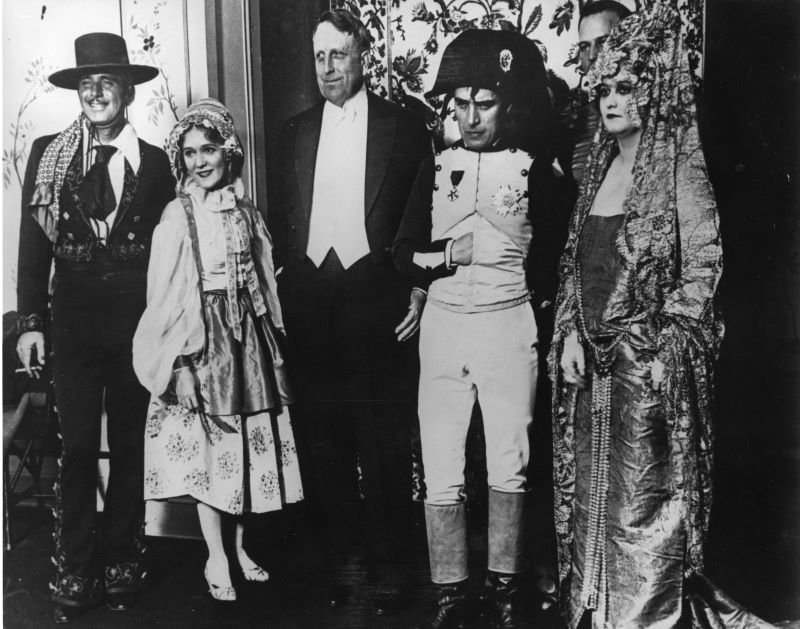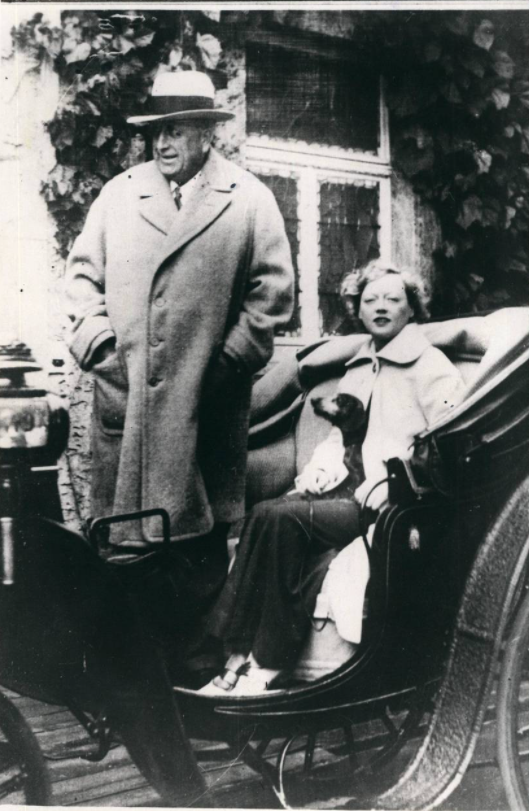100th Anniversary Great Nave Tour at the Cathedral of St. John the Divine
Celebrate the 1925 construction of the stunning nave inside the world's largest Gothic cathedral!


Citizen Hearst, a new American Experience documentary on PBS, provides an introspective look at the life of William Randolph Hearst and a surprising New York City connection. Hearst is often associated with the west coast, particularly for his opulent castle, but as Citizen Hearst shows, a key event in his life took place in New York: In 1941, on the verge of bankruptcy, he was forced to sell off much of his collection of art and artifacts at a fire sale on the fifth floor of Gimbel’s department store. PBS has shared an exclusive clip with Untapped New York of the documentary covering this forgotten event.
The inspiration behind Orson Welles‘ Citizen Kane, Hearst was a man of extraordinary appetite and extravagance whose wealthy empire once remarkably built soon after was stripped down. By the 1930s, he owned the most influential media empire in the United States that consisted of “28 newspapers, a movie studio, a syndicated wire service, radio stations, and 13 magazines,” according to the film’s website. Almost the entire country had read at least one of Hearst’s publications. Eventually, he used his strength in media to pursue politics and ran for presidential office, even serving two terms in Congress.

Citizen Hearst gives a deeper look into how Hearst’s quench for success began. At just 24 years old, Hearst turned around newspaper heads, such as Harvard’s Lampoon magazine, and took control of the San Francisco Examiner in 1887. While he was an only child of a wealthy mining family, Hearst had a penchant for diving further into the journalism world. After conquering the San Francisco market, Hearst decided to take over the country’s biggest newspaper market instead, New York.
In 1895, after receiving a loan from his mother, Phoebe, he revitalized the declining Journal and set the stage for crime reporting by placing his reporters on the scene of the crime. His work began to form a loyal following of immigrants seeking to start their businesses and the working-class overcoming obstacles in their path. For Hearst, the news was not just reporting historical events but also being an active participant in history. Hearst’s empire grew so radically that he had supreme leaders such as Hitler and Mussolini writing for him. He also constructed his infamous castle in San Simeon in California.

However, the Depression would force Hearst into a major reckoning. According to writer Victoria Kastner in Citizen Hearst, “He had incorporated in the ’30s to try to get out of the personal responsibility of the finances, but things started to get quite cataclysmic.” He owed $9 million to Canadian paper mills who refused to ship the newspapers out if he did not pay, and he owed $78 million (equivalent to $1.5 billion in today’s dollars) to banks and creditors.
On a train to visit creditors in New York, he told his girlfriend, Marion Davies, that he was through. When Hearst arrives in New York, he finds out that he can only save his prolific empire by stepping aside and establishing a trustee. It is then that Davies offers Hearst one million dollars to help him, and he begins to liquidate all his assets to pay off his debts.
Hearst’s San Simeon home began to lose its prestige bit by bit, as he sold off his animals to zoos and let staff members go. He sold some of his newspapers to pay off the rent and maintenance of San Simeon, and soon after that, his art collection also needed to be auctioned off. An advisor mentioned “that liquidating Hearst’s art at auction would be ‘like emptying an oil tanker with an eyedropper.'” Hearst decided to sell at Gimbels department store in Midtown Manhattan next to Pennsylvania Station, filling the fifth floor of Gimbels with his art.

Citizen Hearst shows the advertisement of the 1940s clip that exclaims “New York City Art- at Clearance!” as Mr. Gimbel and others examine the pieces of Heart’s $50 million art collections. “Articles from 25 cents to 200,000 dollars. 15,000 objects in all. Spread over 80,000 square feet of floor space,” the clip says. Indeed, the catalog itself was impressive, running up to 334 pages. The Gimbels art collection included paintings from nearly every country imaginable, tapestries, silverware, Egyptian antiques, pottery, china, terra cotta, Roman objects, guns, frescoes, swords, jewelry, rugs, flags, and much more.

According to Citizen Hearst, watching his art collection sell at a department store (one the narrator calls “second-grade”) was degrading and humiliating for Hearst’s stature. Says author Gary Kamiya, “In many ways, William Randolph Hearst is an American writ large. He embodies everything good and bad about the essence of this country: its expansiveness, its ambition, its greed, its sentimentality, its showmanship, and its ability to transform itself.” One upside of this whole affair: Hearst decided it was time to finally marry Marion.
Citizen Hearst is based on David Nasaw’s biography, The Chief: The Life of William Hearst, The documentary splits between two episodes that premiere Monday and Tuesday, September 27 & 28, 2021, 9:00-11:00 p.m. ET. Check your local listings for American Experience on PBS, PBS.org, and PBS Video App.
Next, check out the 12th-century monastery stored in a Brooklyn warehouse, which was purchased by Hearst.
Subscribe to our newsletter